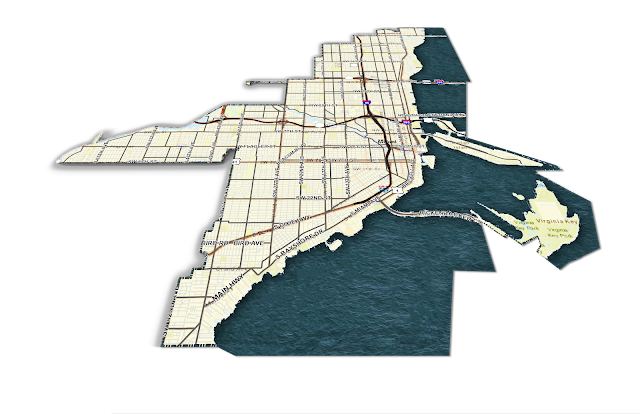MIAMI URBAN STUDY, city of Florida
The Miami metropolitan area, also known as the Greater Miami Area, South Florida, or the Miami-Fort Lauderdale-West Palm Beach metropolitan area is the 72nd largest metropolitan area in the world and the seventh-largest metropolitan area in the United States. Miami, city, seat of Miami-Dade county, southeastern Florida, U.S.A major transportation and business hub, Miami is a leading resort and Atlantic Ocean port situated on Biscayne Bay at the mouth of the Miami River. The Everglades area is a short distance to the west.
MASTER PLANNING
Geographic mobility:
In 2005, 83% of the people at least one year old living in the Miami metro area were living in the same residence one year earlier; 12% had moved during the past year from another residence in the same county, 2% from another county in the same state, 2% from another state, and 1% from abroad.
Miami Modernist architecture:
Is a regional style of architecture that developed in South Florida during the post-war period. The style was internationally recognized as a regionalist response to the International Style. It can be seen in most of the larger Miami and Miami Beach resorts built after the Great Depression. Because MiMo styling was a not just a response to international architectural movements but also to client demands, themes of glamour, fun, and material excess were added to otherwise stark, minimalist, and efficient styles of the era. The style can be most observed today in Middle and Upper Miami Beach along Collins Avenue, as well as along the Biscayne Boulevard corridor starting from around Midtown, through the Design District and into the Upper Eastside.
TRANSPORTATIONS
Road ways:
The Miami metropolitan area is served by five interstate highways operated by the Florida Department of Transportation (FDOT) in conjunction with local agencies. Interstate 95 (I-95) runs north to south along the coast, ending just south of Downtown Miami at South Dixie Highway (US 1). I-75 runs east to west, turning south in western Broward County and connecting suburban north Miami-Dade to Naples on the Southwest Coast via Alligator Alley, which transverses the Florida Everglades before turning north. I-595 connects the Broward coast and downtown Fort Lauderdale to I-75 and Alligator Alley. In Miami, I-195 and I-395 relay the main I-95 route east to Biscayne Boulevard (US 1) and Miami Beach across Biscayne Bay via the Julia Tuttle and MacArthur causeways.
Air ways:
The metropolitan area is served by three major commercial airports. These airports combine to make the fourth largest domestic origin and destination market in the United States, after New York City, Los Angeles, and Chicago.
Sea ports:
The Port of Miami is the world’s busiest cruise ship port. The metropolis also has four seaports, the largest and most important being the Port of Miami. Others in the area include Port Everglades, Port of Palm Beach and the Miami River Port.
ELEMENTS OF STREETS
Streets are an important component of the livability of a community and the public realm. They should be designed to accommodate safe, convenient and attractive travel for all users. Pedestrians, bicyclists, motor vehicle drivers and transit riders alike ought to be able to comfortably move along and across complete streets. Well-designed streets encourage healthy lifestyles, improve social interaction, foster walkable communities and create a sense of place.A complete street is comprised of many different elements, which may include: sidewalks, street trees, bicycle lanes, on-street parking, center medians, vehicular travel lanes, dedicated bus lanes, crosswalks and more. The elements used can differ from street to street, but the end result should achieve a connected network that is safe, effective and balances all modes of travel.
-----------------------------------------------------------------------------








Comments
Post a Comment